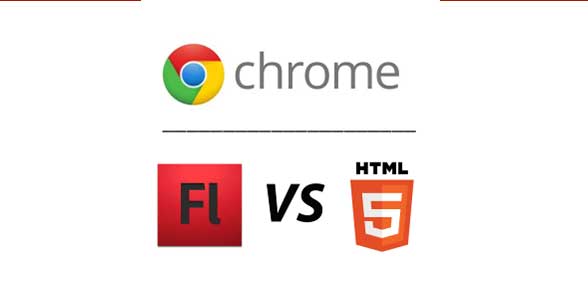Google Chrome Favors HTML5 over Flash Web Ads

Last month Google began blocking web ads using Adobe Flash, favoring HTML5 ads instead. Their objective has been to improve user experience with faster load times and less battery consumption. Apple did this as well on their non-desktop devices for the same reasons. Now, if a user wants to see the ad, the user must manually click the ad to view it.
Expect more of this kind of service to occur, as ad blocking has actually begun trending. In fact, Google Chrome started the trend in 2014 with ad-blocking apps to attract more users – and they were successful with a 96% growth in users. In 2014, there was a 70% year-over-year growth for all ad blockers, as Amazon and Firefox also jumped and decided to block Flash. In fairness to Google, they did provide tools for advertisers to use to translate ads to HTML5.
Flash versus HTML5
For entrepreneurs and vendors, the ad blocking trend is shaking up their advertising and marketing strategies mainly because of the need to shift to HTML5. Additionally, those who prefer to stick with Flash are being burdened with fewer choices in support and inventory.
To delve deeper into the Flash versus HTML5 issue, here are a few critical pointers for and against each one:
- HTML5 uses pure code and is newer. It allows for standardization, which helps the various media.
- Flash uses a plug-in player so it is simpler to use interactive elements and allows for bidirectional information streaming between user and website.
- Flash is used by 70% of web-based games, 75% of web videos, 99% of browsers, and 85% of top websites.
- HTML5 is starting to gain in numbers after the 2014 move to drop Flash web ads, especially among mobile device users. According to figures by www.netmarketshare.com, 68% of desktop browsers are now HTML5 compatible, but this does not necessarily mean that more desktop users are able to watch your HTML5 videos. This will happen only if they experience problems with Flash. It could mean that switching to HTML5 could lead to a drop in ad viewership.
- HTML5 technology is free, whereas one must purchase Flash.
- HTML5 is well-supported for mobile devices; SEO is easier to use for online forms and has free updates, but is harder to animate and you need JavaScript and CSS knowledge to use it.
- Flash does not work as well with mobile devices but is vector-based, which is great for large files. Flash also is better with audio, interactivity, advanced video handling, and animation.
In spite of all that Flash has to offer, its days appear to be limited as HTML5 will soon catch up in numbers and features. If your business is investing in mobile users, it is best to make that switch now; otherwise, you can be less rushed and make a gradual shift to HTML5. Fortunately, the US trade body, Interactive Advertising Bureau, is being proactive with its own initiatives to help ad tech businesses migrate successfully and seamlessly to HTML5.
Tags
Apparel business growth business operations Business Services Communication Compliance Content Creation Content Marketing CRM Customer Service Customer Support Custom Print Custom Solutions data e-commerce Ecommerce Email Email Marketing Solutions Google Graphic Design kpi Marketing Messages Marketing Strategies Mobile Applications Partner planning PPC Press Releases printing format Print Shop Project Management Sales SEO Shopify Small Business Social Media strategy tracking Web Design Website Management Wordpress Zoho Zoho Vault
